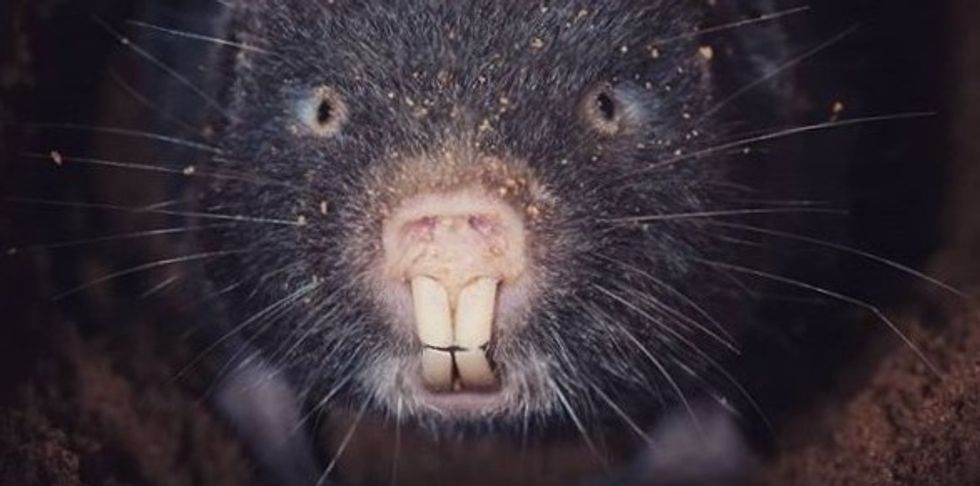Naked Mole Rats Could Be The Key To Cancer Resistance In Humans
These scary little critters tell us a lot more about science than you might think.
At first glance, naked mole rats are these chimeral monstrosities that combine the physiology of a rat with the leathery skin of a pink snake. Now, I get that was a bit harsh, but the truth of the matter is the naked mole rat is in a murophobe's worst nightmare. Although these creatures lie on the eccentric spectrum of the animal kingdom, they are a stone left unturned by scientists for decades and only recently has this gem been uncovered; the results in their research may shock you.
The root of the naked mole rat's adaptations derives from their unforgiving habitat. Populated in the grasslands of East Africa, they occupy a habitat of high temperatures with irregular rainfall patterns. They burrow deep into the ground, where the temperatures of this ruthless terrain and lack of oxygen would be uninhabitable for most mammals. These eight to ten centimeter, hairless rodents adopted unique characteristics to thrive in these conditions.
Because oxygen is fairly limited in the nest, the naked mole rat has much smaller lungs than most of its other rodent counterparts. This increases the affinity for oxygen, yet the respiration and metabolic rate is two-thirds of other rodents its size.
Naked mole rats do not feel pain. The neurotransmitter substance P is responsible for our sensation of pain, such as the sensation you feel when you eat something spicy. The naked mole rat lacks this substance and feels no pain from exposure to acids. The burrowing nest tends to be an environment that is high in carbon dioxide due to its dearth of ventilation, making it too acidic for other animals to live there. This trait is believed to be why they don't feel an itchy sensation.
Naked mole rats are the only cold-blooded mammals; their body temperature is subject to change with the environment. As temperatures drop too low, the mole rats would huddle together in order to thermoregulate their bodies during a cold spell.
The mole rat diet is… interesting, for lack of a better term. They burrow until they stumble upon tubers (roots) 1,000 times the average body weight of one mole rat. If they only consume the inside of the tuber, it can regenerate the lost mass and feed the colony for years on end. Sounds normal right? Well, the tubers are nearly indigestible for mole rats, and so they consume their excrement in order to redigest the matter. This behavior also retains the scent of the colony, allowing members to identify one another from enemies and resolves the issue of their blindness.
The strangely efficient immune system these rodents have makes them highly resistant to an illness that is believed to take 609,640 lives in 2018 alone: cancer. Naked mole rats share the p27 gene with other mammals, preventing cell division once a group of cells reaches a certain number (they also harbor the p16 gene which has a similar function but is less common.) These paired genes act as two defense barriers—instead of one in humans—to prevent the proliferation of cancer cells.
The University of Rochester is conducting research on understanding the genetic and physiological factors that govern this cancer resistance. The senescence of cancer cells is believed to be different from that of other rodents. Further studies are being done to understand the different characteristics and biochemical mechanisms responsible for their longevity.
All of these characteristics culminate down to the fact that these are some of the longest living rodents on the planet. Although there is little known about how these creatures age, the average lifespan for a naked mole rat is 28 years! To put it into perspective, brown rats can live to about two years and black rats a measly 12 months.


































